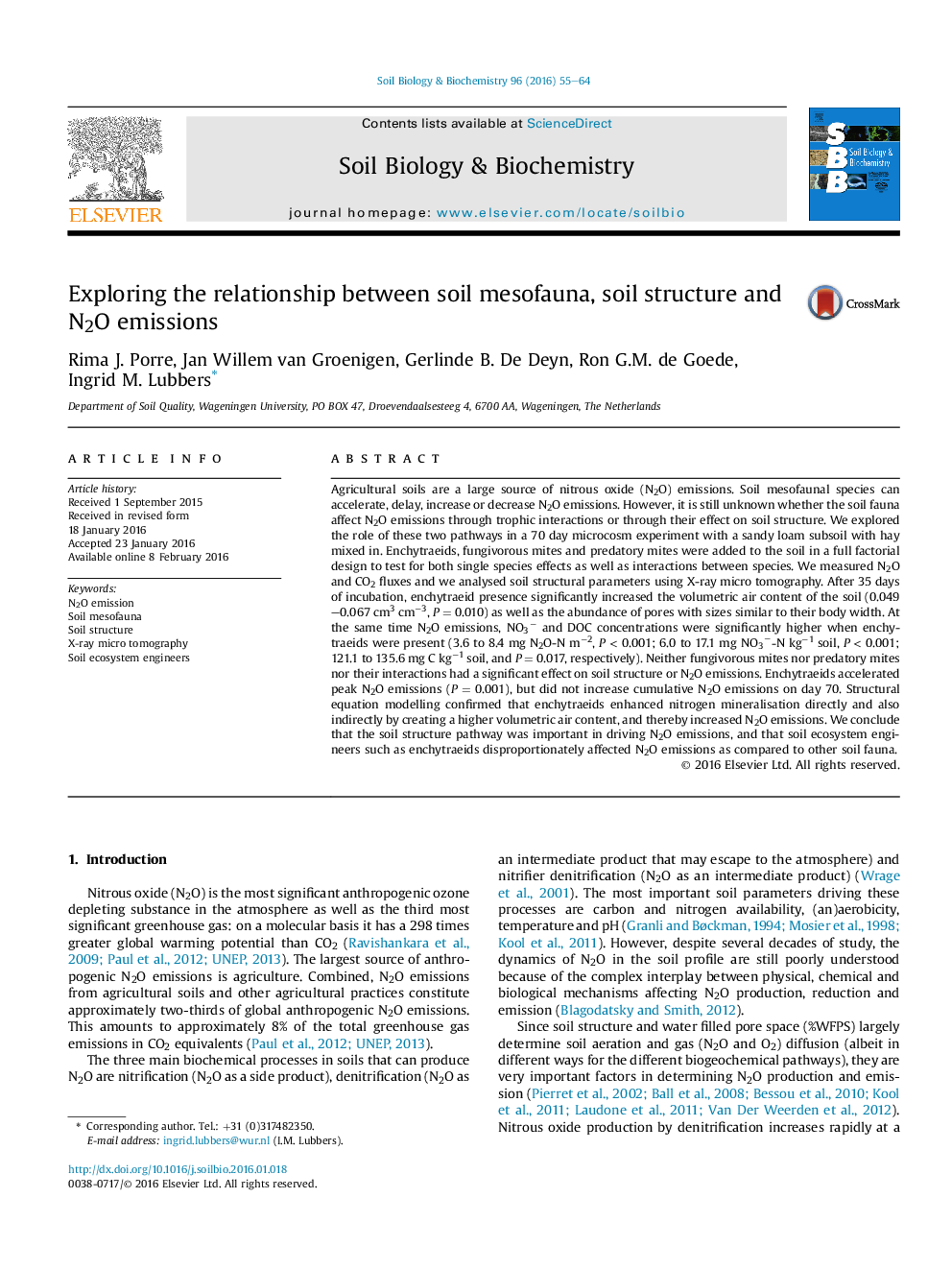| Article ID | Journal | Published Year | Pages | File Type |
|---|---|---|---|---|
| 2024346 | Soil Biology and Biochemistry | 2016 | 10 Pages |
•XRT can be used to detect changes in soil structure caused by soil mesofauna.•Enchytraeids increase porosity and the volumetric air content.•Enchytraeids alter the pore size distribution in accordance with their body width.•Enchytraeids accelerate peak N2O emissions.•Fungivorous and predatory mites did not significantly affect porosity and N2O emissions.
Agricultural soils are a large source of nitrous oxide (N2O) emissions. Soil mesofaunal species can accelerate, delay, increase or decrease N2O emissions. However, it is still unknown whether the soil fauna affect N2O emissions through trophic interactions or through their effect on soil structure. We explored the role of these two pathways in a 70 day microcosm experiment with a sandy loam subsoil with hay mixed in. Enchytraeids, fungivorous mites and predatory mites were added to the soil in a full factorial design to test for both single species effects as well as interactions between species. We measured N2O and CO2 fluxes and we analysed soil structural parameters using X-ray micro tomography. After 35 days of incubation, enchytraeid presence significantly increased the volumetric air content of the soil (0.049–0.067 cm3 cm−3, P = 0.010) as well as the abundance of pores with sizes similar to their body width. At the same time N2O emissions, −NO3NO3− and DOC concentrations were significantly higher when enchytraeids were present (3.6 to 8.4 mg N2O-N m−2, P < 0.001; 6.0 to 17.1 mg −NO3-NNO3−-N kg−1 soil, P < 0.001; 121.1 to 135.6 mg C kg−1 soil, and P = 0.017, respectively). Neither fungivorous mites nor predatory mites nor their interactions had a significant effect on soil structure or N2O emissions. Enchytraeids accelerated peak N2O emissions (P = 0.001), but did not increase cumulative N2O emissions on day 70. Structural equation modelling confirmed that enchytraeids enhanced nitrogen mineralisation directly and also indirectly by creating a higher volumetric air content, and thereby increased N2O emissions. We conclude that the soil structure pathway was important in driving N2O emissions, and that soil ecosystem engineers such as enchytraeids disproportionately affected N2O emissions as compared to other soil fauna.
